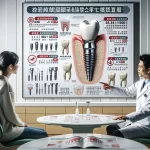Are you dreaming of a flawless smile that radiates confidence? Dental veneers could be your ticket to achieving that perfect grin! These innovative, custom-made shells are designed to enhance the aesthetic of your teeth while addressing various cosmetic concerns. In this comprehensive guide, we’ll explore everything you need to know about dental veneers, including their types, benefits, and the step-by-step process of getting them.
What Are Dental Veneers?
Dental veneers are ultra-thin shells crafted from tooth-colored materials such as porcelain or composite resin. They are bonded to the front surface of your natural teeth, transforming their appearance and effectively correcting issues like discoloration, chips, cracks, misalignment, and gaps.
Types of Dental Veneers
Choosing the right type of veneer is crucial for achieving your desired results. Here are the most common options:
- Porcelain Veneers: Often considered the gold standard in cosmetic dentistry, porcelain veneers offer a natural look and exceptional durability. Made from high-quality ceramic materials, they closely mimic the translucency of natural tooth enamel and are highly resistant to staining. With proper care, they can last between 10 to 15 years.
- Composite Resin Veneers: These veneers are made from a tooth-colored plastic material that is sculpted directly onto your teeth by your dentist. They provide a more affordable alternative to porcelain veneers but typically last only 5 to 7 years and may be more susceptible to staining.
- Lumineers: A brand of ultra-thin porcelain veneers that require minimal tooth preparation. Lumineers can be placed over existing tooth structures without significant enamel removal, making them a less invasive option. However, they may not be suitable for everyone and usually have a shorter lifespan compared to traditional porcelain veneers.
- Palatal Veneers (Palatal Onlays): Designed to restore the inner surfaces of front teeth affected by decay or damage, palatal veneers are less common but can be an effective solution in specific cases.
Benefits of Dental Veneers
Dental veneers offer numerous advantages that make them an appealing choice for many individuals:
- Enhanced Appearance: Veneers can dramatically improve your smile by correcting various cosmetic issues such as discoloration and misalignment.
- Natural Look: High-quality porcelain veneers blend seamlessly with your natural teeth for an authentic appearance.
- Stain Resistance: Porcelain is highly resistant to staining, ensuring your smile remains bright for years.
- Durability: With proper care, porcelain veneers can last over a decade.
- Versatility: Whether addressing minor imperfections or more significant concerns, veneers provide a versatile solution.
- Minimal Tooth Preparation: Some options like Lumineers require little to no enamel removal, making the procedure less invasive.
- Boosted Confidence: A beautiful smile can significantly enhance your self-esteem and overall quality of life.
The Process of Getting Dental Veneers
The journey to achieving your dream smile typically involves several steps:
- Consultation and Evaluation: Your dentist will examine your teeth and discuss your goals to determine if you’re a suitable candidate for veneers.
- Tooth Preparation: Depending on the type of veneer chosen, a small amount of enamel may be removed to create space for the veneer.
- Impressions and Shade Selection: Your dentist will take impressions of your teeth and select a shade that matches your desired tooth color.
- Veneer Fabrication: A dental laboratory will create custom-made veneers based on your impressions and shade selection.
- Veneer Placement: During your final appointment, the dentist will bond the veneers to your teeth with precision for a perfect fit.
- Follow-Up and Maintenance: After placement, you’ll receive care instructions to ensure the longevity of your new smile. Regular dental check-ups are essential for maintaining both health and aesthetics.
Cost of Dental Veneers
The cost varies based on factors such as material type and location:
- Porcelain Veneers: $925 – $2,500 per tooth
- Composite Resin Veneers: $250 – $1,500 per tooth
- Lumineers: $800 – $2,000 per tooth
It’s important to note that dental insurance often does not cover cosmetic procedures like veneers; however, many dental offices offer financing options to help manage costs.
Caring for Your Dental Veneers
To maintain the beauty and longevity of your veneers:
- Brush twice daily with a soft-bristled toothbrush and non-abrasive toothpaste.
- Floss daily to remove plaque and food particles.
- Limit consumption of staining substances like coffee and red wine.
- Avoid hard objects—don’t use your teeth as tools!
- Wear a nightguard if you grind or clench your teeth at night.
- Schedule regular dental check-ups for professional cleanings.
Conclusion
Dental veneers represent an excellent option for those looking to enhance their smiles while addressing various cosmetic concerns. With the right choice of veneer and diligent care, you can enjoy a radiant smile that lasts for years. If you’re considering dental veneers, consult with a qualified cosmetic dentist who can guide you through the options best suited for your needs. Transforming your smile is just an appointment away!
For more information on dental health and cosmetic procedures, visit reputable sources such as:
These resources provide valuable insights into dental care practices and innovations in cosmetic dentistry.
What are dental veneers?
Dental veneers are thin, custom-made shells designed to cover the front surface of teeth to improve their appearance. They provide a natural, attractive look and can solve various dental issues like discoloration, gaps, or misshapen teeth.
What dental issues can veneers solve?
Veneers can address a variety of dental issues, including discolored, worn down, chipped, broken, misaligned, uneven, irregularly shaped teeth, or teeth with gaps between them. They offer a cosmetic solution that enhances your smile.
Are there any problems associated with dental veneers?
While dental veneers are generally safe, potential issues can include discomfort during the procedure, sensitivity to hot and cold, potential for veneers to dislodge or chip, and irreversible process as a small amount of enamel needs to be removed.
Can veneers be used on any teeth?
Yes, veneers can be used on any teeth, but they’re most commonly applied to the front teeth – the top eight or bottom eight. They are custom-made to fit each tooth for a natural and aesthetically pleasing look.
What are the steps involved in getting dental veneers?
The process of getting dental veneers involves consultation, preparation which includes reshaping the tooth surface and making a model of your tooth, and bonding, where the veneer is cemented to your tooth and adjusted for a perfect fit.







